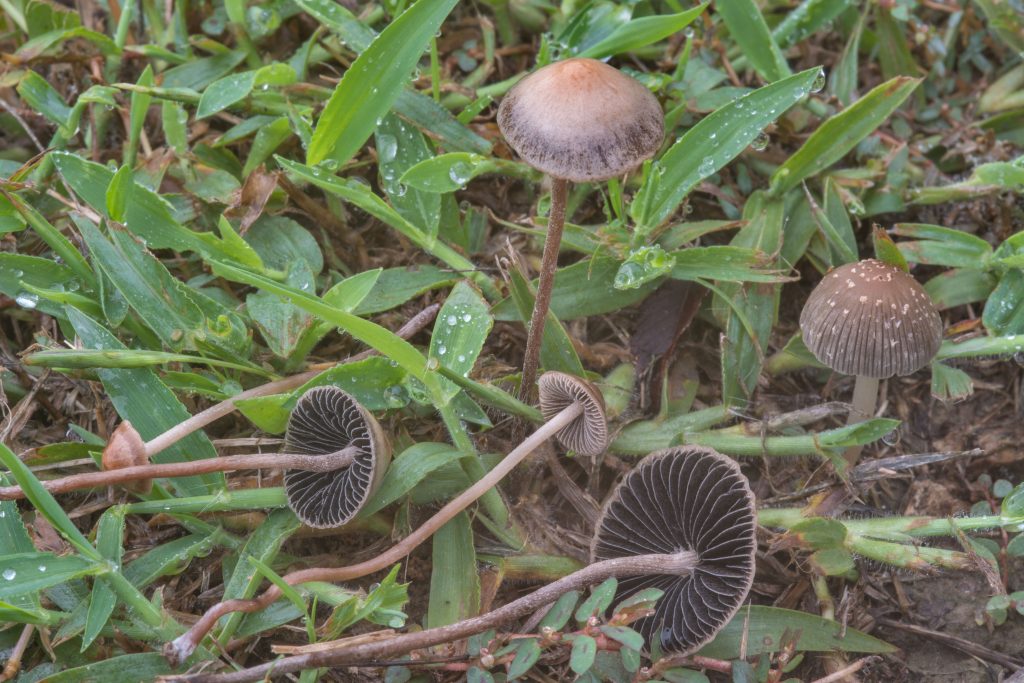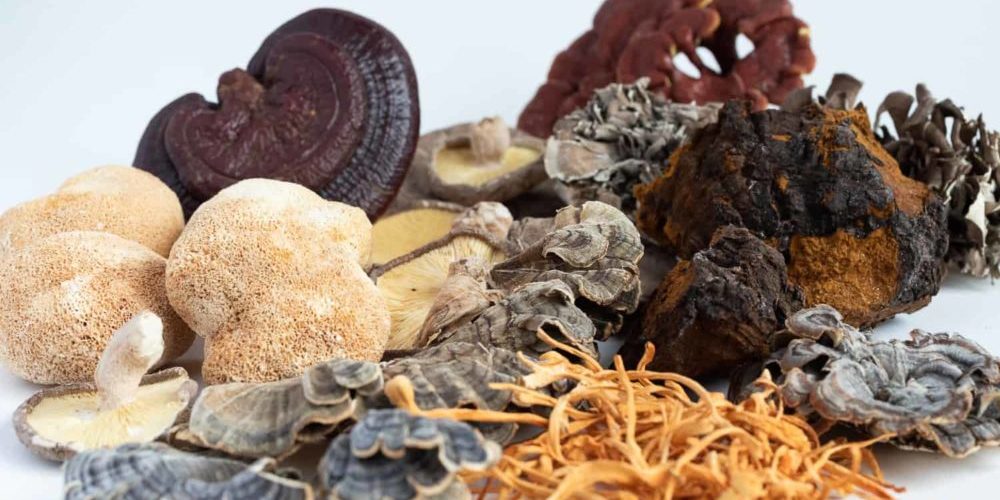The Turf Mottlegill[i] is puzzling. Many mycologists refer to it as poisonous because it may contain small amounts of psilocybin—we haven’t been able to track down reports of it containing any other toxin. Apparently, its toxin is psilocybin and only psilocybin. And no, that’s not quite as disingenuous as it sounds, for while many people use psilocybin with excellent results, an unintended trip would be a serious problem. And yet, we haven’t been able to track down reports of anyone actually using this species, as we’d expect if it was truly active. It’s not as if the Turf Mottlegill were rare or hard to find.
Its potency is low or highly variable, as is true of several other members of its genus, and it’s therefore not popular among psychonauts. But in the absence of hard information its biochemistry, all we can do is tell you what this mushroom is, what it looks like, and where it’s found.
Identification and Description
Cap: Small to medium-sized, hemispheric when young, broadening with age. Can be any of several shades of reddish or purplish brown, but drying paler. Smooth.
Gills: Attached to the stem. Initially gray-brown with white edges, then developing black patches, then becoming entirely black as the spores mature.
Stem: Medium length, thin. Mostly the same color as the cap but with a white bloom near the top. There is never a stem ring.
Smell: Not distinctive for identification.
Taste: Not distinctive for identification.
Spores: Lemon-shaped.
Spore Print: Black or blackish.
Habitat: Feeds on dead grass, common in lawns.
Range: Common across much of Europe and North America.
The Turf Mottlegill is best known for popping up in numbers in the lawn, though it’s not the only species to do so. It doesn’t stand out much, though it is darker than many other pans. In general, pans, or mottlegills, are difficult to identify to species without the use of a microscope—sometimes a chemical kit comes in handy, too[ii].
Look-alikes
The Turf Mottlegill looks more or less alike many other small, brownish, nondescript mushrooms, both in its genus and in several others. It’s not that they all look identical, it’s that they all have the same general impression—you have to do the work of keying out all the important details if you want to know what they are.
Perhaps the closest look-alike is the Lawnmower Mushroom or Brown Mottlegill (P. foenisecii), which even shares the habit of popping up in laws. The two are often mistaken for each other. Curiously, online searches for P. fimicola often turn up articles on P. foenisecii. It seems even search engines mix them up. The lawnmower mushroom is usually the paler of the two.
Effects
If the Turf Mottlegill has psilocybin and no other toxin, as seems likely, then its effects are the same as for any other psilocybin mushroom taken at equivalent dose—however, as stated earlier, we can’t be sure that is true. We also don’t know what the potency—and therefore the dosage—of these mushrooms might be. Most like, potency is very low or variable or both. There are more reliable ways to trip.
Toxicity, Safety, & Side Effects
By far the biggest safety consideration with the Turf Mottlegill is the lack of easily accessible information about it. Eating a mushroom without knowing exactly what happened with other people who ate it is usually a bad idea. It could be toxic.
We should also say a word about the toxicity of psilocybin. Clearly, many people use psilocybin and enjoy the results. Under some circumstances, using the substance may in fact promote physical and mental health (though the scientific jury is still out on many such claims), and it is one of the safer known ways to get altered. All in all, calling it a toxin sounds weird, uninformed or perhaps deliberately disingenuous. But many useful substances are potentially dangerous if taken in the wrong way. Psilocybin use is not without risk and can have unpleasant, even dangerous side-effects. It can be particularly dangerous to children. And children and pets are precisely who is most likely to eat a random mushroom growing in the lawn.
If your child or dog or house-guest chomps a few Turf Mottlegills and then starts acting weird, then even if the mushroom contains only psilocybin and not some other unknown substance, then the word for that is mushroom poisoning. They need medical attention.
That being said, the appearance of these mushrooms in the lawn is not cause for panic. The very fact that we had trouble finding information about what happens when they are eaten suggests that poisonings are very rare. Teach your children not to eat things without getting a positive ID from a trusted grown-up first, and you should be fine.
References:
[i] (n.d.). Panaeolus fimicola (Pers.) Gillet—Turf Mottlegill. First Nature
[ii] Kuo, M. (2007). The Genus Panaeolus. MushroomExpert



